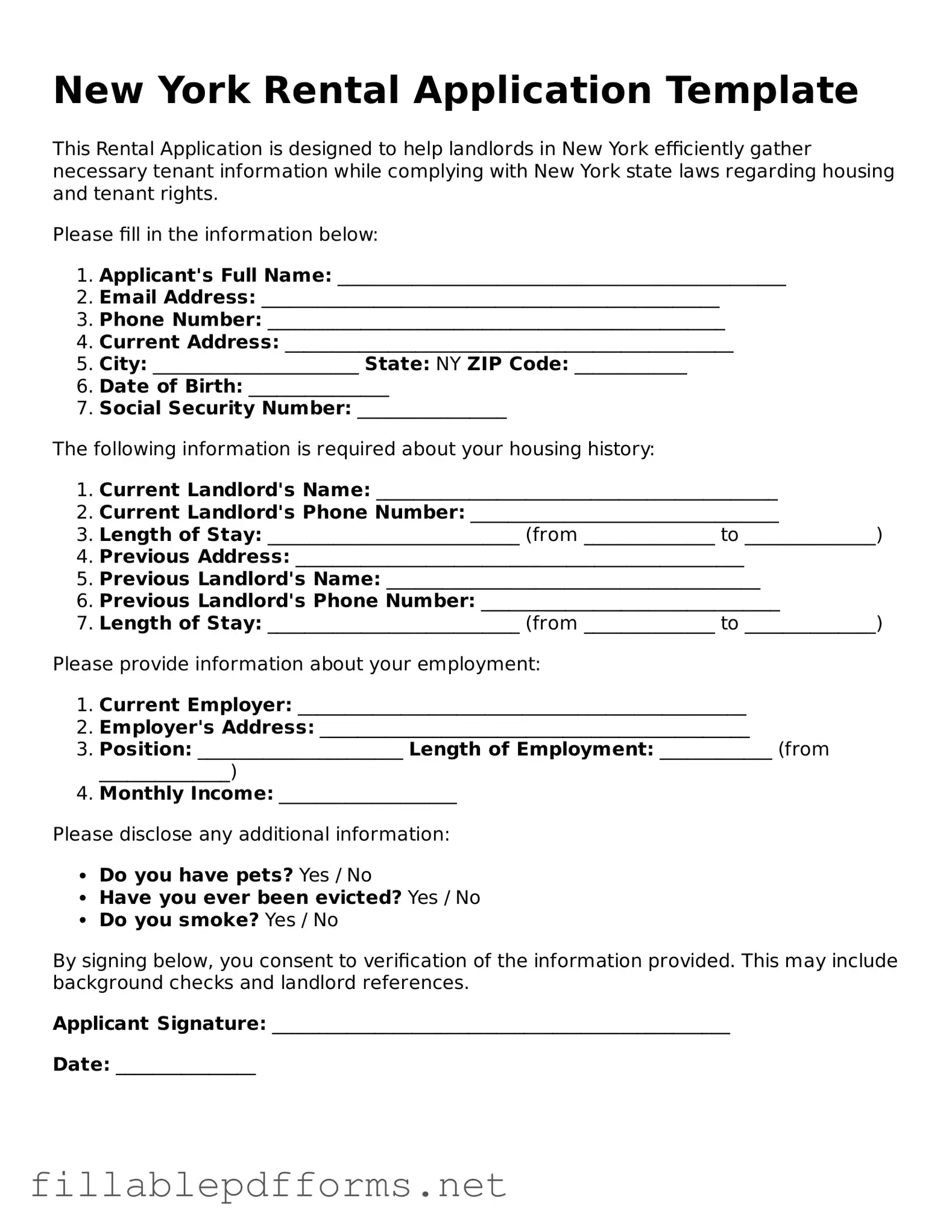The New York Rental Application form serves as a crucial tool for both prospective tenants and landlords navigating the rental market. It typically includes essential sections that gather vital information about the applicant, such as personal details, employment history, and financial background. Often, landlords request references from previous landlords or personal contacts to assess the applicant's reliability and character. Additionally, the form may require disclosure of any criminal history, which plays a significant role in a landlord's decision-making process. Applicants are usually asked to provide consent for background checks, ensuring that landlords can verify the information presented. Moreover, the form often outlines the rental terms, including the security deposit amount and lease duration, providing clarity for both parties. By understanding the components of this form, prospective tenants can better prepare their applications, while landlords can streamline their tenant selection process, ultimately fostering a more transparent rental experience.
